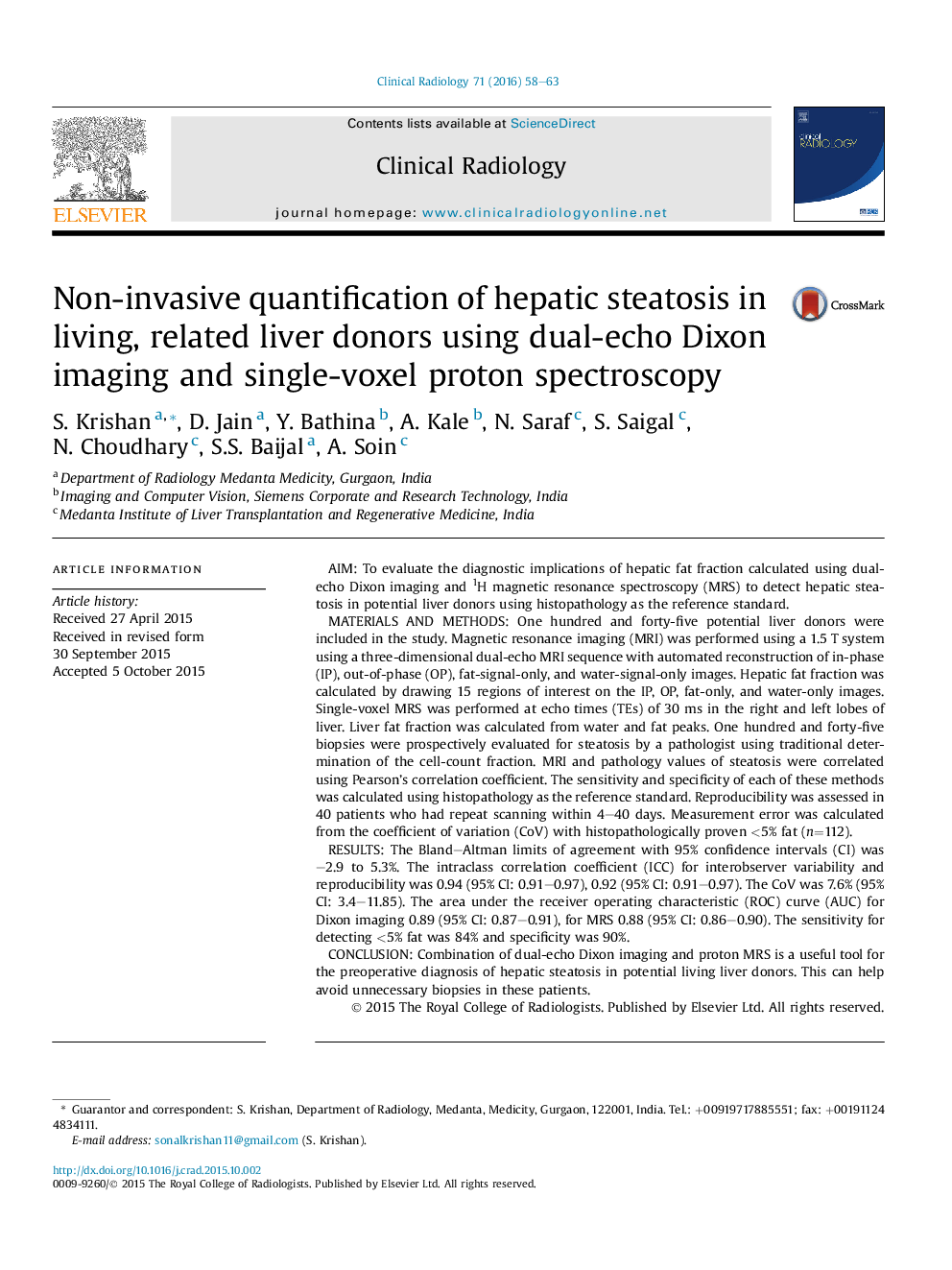| Article ID | Journal | Published Year | Pages | File Type |
|---|---|---|---|---|
| 3981439 | Clinical Radiology | 2016 | 6 Pages |
•This paper highlights repeatability and reproducibility of MR based fat quantification using dual echo Dixon imaging and MR spectroscopy.•MR based fat quantification can safely preclude the need for biopsy in patients with less than 5% fat on MR.•MR is a promising tool for evaluation of liver fat in patients and avoiding the need for liver biopsy.
AimTo evaluate the diagnostic implications of hepatic fat fraction calculated using dual-echo Dixon imaging and 1H magnetic resonance spectroscopy (MRS) to detect hepatic steatosis in potential liver donors using histopathology as the reference standard.Materials and methodsOne hundred and forty-five potential liver donors were included in the study. Magnetic resonance imaging (MRI) was performed using a 1.5 T system using a three-dimensional dual-echo MRI sequence with automated reconstruction of in-phase (IP), out-of-phase (OP), fat-signal-only, and water-signal-only images. Hepatic fat fraction was calculated by drawing 15 regions of interest on the IP, OP, fat-only, and water-only images. Single-voxel MRS was performed at echo times (TEs) of 30 ms in the right and left lobes of liver. Liver fat fraction was calculated from water and fat peaks. One hundred and forty-five biopsies were prospectively evaluated for steatosis by a pathologist using traditional determination of the cell-count fraction. MRI and pathology values of steatosis were correlated using Pearson's correlation coefficient. The sensitivity and specificity of each of these methods was calculated using histopathology as the reference standard. Reproducibility was assessed in 40 patients who had repeat scanning within 4–40 days. Measurement error was calculated from the coefficient of variation (CoV) with histopathologically proven <5% fat (n=112).ResultsThe Bland–Altman limits of agreement with 95% confidence intervals (CI) was –2.9 to 5.3%. The intraclass correlation coefficient (ICC) for interobserver variability and reproducibility was 0.94 (95% CI: 0.91–0.97), 0.92 (95% CI: 0.91–0.97). The CoV was 7.6% (95% CI: 3.4–11.85). The area under the receiver operating characteristic (ROC) curve (AUC) for Dixon imaging 0.89 (95% CI: 0.87–0.91), for MRS 0.88 (95% CI: 0.86–0.90). The sensitivity for detecting <5% fat was 84% and specificity was 90%.ConclusionCombination of dual-echo Dixon imaging and proton MRS is a useful tool for the preoperative diagnosis of hepatic steatosis in potential living liver donors. This can help avoid unnecessary biopsies in these patients.
